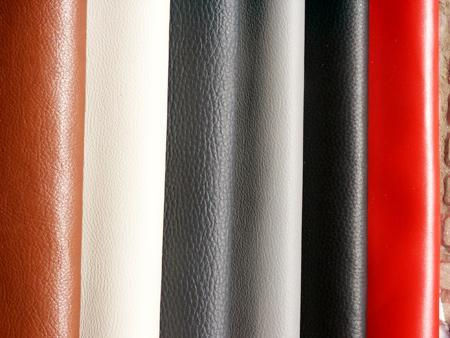How to Care for Faux Synthetic Leather Products
- rockuniquotersseo
- Apr 15
- 3 min read
Faux synthetic leather has become a popular alternative to genuine leather due to its affordability, ease of maintenance, and cruelty-free appeal. Whether you own synthetic leather jackets, furniture, bags, or shoes, proper care is essential to extend their life and keep them looking good. This guide breaks down how to clean, store, and protect faux leather so it holds up well over time.
1. Understand the Material
Faux leather, often called synthetic leather or vegan leather, is usually made from a plastic base like polyurethane (PU) or polyvinyl chloride (PVC). These materials are designed to mimic the look and feel of real leather but differ significantly in durability and maintenance needs. Unlike natural leather, faux leather doesn’t breathe or develop a patina. However, it is resistant to stains and water, making it more user-friendly in everyday scenarios.
2. Regular Cleaning Routine
Dust and grime can break down synthetic leather over time, so regular cleaning is key. Use a soft cloth or microfiber towel to wipe down the surface weekly. For a deeper clean:
Mix a few drops of mild dish soap with warm water.
Dampen a cloth with the solution and gently wipe the surface.
Avoid soaking the material or using abrasive brushes.
Wipe away any soap residue with a clean, damp cloth.
Let it air dry completely.
Never use bleach, ammonia, or strong solvents. These can damage the surface and lead to cracking or fading.
3. Conditioning Faux Leather
Though synthetic leather doesn’t absorb oils like real leather, it can still dry out and crack over time. Using a vinyl or faux leather conditioner once every couple of months can help maintain flexibility. Always test any product on a small, hidden area before full application.
4. Preventing Cracks and Peeling
Cracking and peeling are common issues with faux leather. To prevent this:
Keep items away from direct sunlight, which can dry out and fade the material.
Avoid placing heavy or sharp objects on synthetic leather furniture.
Don’t overstuff faux leather bags, as excess pressure can cause stress and wear.
5. Storing Items Properly
Storage plays a big role in maintaining the shape and quality of faux leather products:
For jackets, use padded hangers to prevent shoulder creases.
Store bags with tissue paper inside to help them hold their shape.
Keep items in a cool, dry place.
Avoid plastic covers for long-term storage; they can trap moisture and encourage mold.
6. Handling Stains and Spills
Act fast when spills occur. Blot—don’t rub—liquids immediately with a clean cloth. For tougher stains like ink or dye transfer:
Use rubbing alcohol on a cotton ball and dab gently.
Rinse the area with a damp cloth.
Dry thoroughly.
Avoid scrubbing or using harsh chemicals that can strip the coating.
7. Repairing Minor Damage
Small scratches or scuffs can often be minimized with a matching leather repair kit. These kits come with colored compounds and applicators. If the damage is significant, professional help may be the best option.
8. Protecting Against Wear and Tear
Daily wear can take a toll, especially on frequently used items like handbags or shoes. To reduce wear:
Rotate your accessories to avoid constant use of the same item.
Use dust bags for handbags and boxes for shoes.
Keep faux leather away from abrasive surfaces.
A high-quality artificial leather manufacturer will often treat their products with a protective finish. However, adding a protective spray specifically for synthetics can give extra durability.
9. Cleaning Faux Leather Furniture
For larger items like couches or chairs:
Vacuum regularly using a soft brush attachment.
Use the same mild soap and water mix for spot cleaning.
Condition large surfaces with products made for vinyl or faux leather.
Place furniture away from windows or use curtains to protect from sun exposure.
10. Environment and Longevity
Faux leather is generally more resistant to environmental factors than real leather, but it still has a lifespan. With care, high-quality synthetic leather can last for several years without showing serious signs of wear. Brands like Best Leather Company often incorporate durable finishes to extend the life of their faux leather offerings.
Conclusion
Caring for faux synthetic leather doesn’t have to be complicated. Routine cleaning, proper storage, and smart preventative measures go a long way in maintaining the look and feel of your items. Whether you purchased your goods from a high-end store or a budget-friendly artificial leather manufacturer, consistent upkeep will always pay off. Treat your synthetic leather well, and it will continue to serve you in style.



Comments